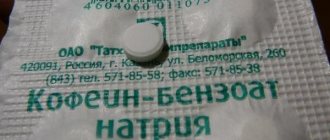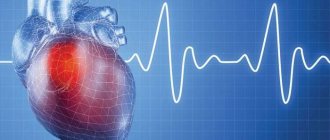What is fasted cardio?
The idea of fasted cardio is to do cardio on an empty stomach. Most often, such workouts are performed in the morning, since by this time you have not eaten for the last 6-10 hours.
Some athletes find fasted cardio easy, while others find it difficult.
In this article, we provide evidence for and against fasted cardio to help you decide whether this strategy is worth pursuing for you personally.
Fasted cardio in the morning: how to do it right
If you decide to resort to the most effective fat burning method and get rid of excess weight in a fairly quick time, you need to provide yourself with a daily routine that will protect your body from stress. If you are a person with weak or average physical fitness, then cardio on an empty stomach in the morning is already stress in itself, since the body is unfamiliar with such loads, and it will need to devote a lot of effort.
People with good physical fitness also need to be careful not to overuse such training.
You need to remember that cardio in the morning puts a lot of stress on the cardiovascular and respiratory systems. The intensity of the training should be moderate.
Why does fasted cardio burn fat?
When you exercise, your body primarily needs carbohydrates to replenish energy. After you eat carbohydrates, glucose (the building blocks of carbohydrates) is available in your bloodstream and muscles for energy. Long and intense cardio training burns glucose and then begins to burn stored energy (muscle glycogen).
Weight loss occurs when you burn more calories than you consume. And this is the reason why most of us do cardio. However, the decision to target burning fat instead of burning carbohydrates (the body's preferred source of energy) can be difficult. The theory behind fasted cardio is to work at a less intense level, so that when glucose is not available, the body begins to break down stored fat for energy instead.1 Determining the right balance of calories to force the body to burn for fuel stored fat instead of breaking down stored glycogen or muscle can be difficult.
Why is fat deposited in our body?
After you've had lunch and gone about your business, a complex chemical process begins in your body. The body, which has received energy from the outside with food, begins to convert it into the energy necessary to maintain its vital functions.
Part of the energy is glycogen - will be sent to the muscles and liver. Glycogen stored in the liver provides the body with glucose. And glycogen, which is stored in muscles, is needed for physical activity. Since glycogen can accumulate in the liver and muscles in rather limited quantities, its excess is transformed into fat and sent to the so-called fat depot. This will already be a strategic reserve, which is not so easy to obtain: the body resorts to it only when the glycogen reserve is depleted.
If you haven’t moved much during the day and haven’t used up your glycogen reserves, your body will convert it into fatty tissue and store it until better times.
Be sure to read: Which is better for losing weight - an exercise bike or a treadmill?
Nowadays, when supermarket shelves are replete with food products whose energy value is tens of times higher than the natural needs of the body, gaining excess weight is not difficult. High-carbohydrate foods such as buns, chocolate, pies, sweets, cakes in just one serving can contain the body's daily need for carbohydrates. And all this goes straight to the fat depot: this is the peculiarity of “fast” carbohydrates. But once you make adjustments to your diet, replacing “fast” carbohydrates with “slow” ones (porridge, pasta made from durum wheat, bread made from whole grain flour), the body will begin to rationally distribute the calories received. Of course, you can gain weight with proper nutrition. But here the amount of food eaten will matter.
So, we learned that the body uses glycogen throughout the day. By leading a sedentary or office lifestyle, you are unlikely to ensure that it reaches fat reserves and begins to use them up.
In order to start burning fat, we need to engage in aerobic training. Aerobic or cardio training is a type of physical activity in which oxygen plays a major role. It is oxygen that will start the process of breaking down fat into energy and water, and this is exactly what we strive for!
Jogging in the fresh air, cycling uphill, water aerobics, play sports, dancing - all of this refers to aerobic exercise that is best suited for those who want to lose weight and get rid of subcutaneous fat deposits.
Cardio on an empty stomach in the morning, before breakfast, significantly increases the effectiveness of weight loss. The fact is that while you were resting at night, glycogen reserves were used up to maintain the basic needs of the body. This is why, as a rule, we feel hungry in the morning: we need to replenish quick energy and begin our daily activities.
If you go for a morning run or do a 40-minute fitness workout instead of breakfast, your body will be forced to use fat as energy.
What are the benefits?
1. Burns accumulated energy - fat
People usually want to try fasted cardio because they think that working out without eating first forces the metabolism to adapt. Yet, the type and intensity of exercise you perform also influences how your body decides to provide fuel for your workouts. Ideal conditions for burning fat include no newly introduced glucose into the bloodstream (you should have been without food for the last 4-8 hours) and low to moderate intensity exercise to avoid damaging or destroying muscle tissue.
2. Combines with intermittent fasting
Intermittent fasting, or eating only at specific times during the day, means that your morning workout is more likely to be done during your fasting period. There are several types of this diet, and research is being conducted to identify all of its potential benefits and side effects. Fasted cardio can easily be combined with many types of intermittent fasting.
3. You can do the workout immediately after waking up
The fact that you gain time that you would normally spend fueling your workout is the best benefit of fasted cardio. Typically, you don't start your workout until about thirty minutes after you eat, which means that if you're going to do a workout at six in the morning, you need to finish breakfast before 5:30 in the morning. However, if you do fasted cardio, you don't have to wake up earlier to make breakfast or a pre-workout snack, you don't even have to drink a protein shake - just start working out as soon as you wake up, and worry about food later.
Fasted Cardio for Fat Loss/Weight Loss
So, is fasted cardio effective for weight loss and fat burning? As with most bodybuilding exercises, this depends on a number of conditions. Although research supports the idea that most fat is burned in the digestive system without carbohydrates, getting enough energy to run or bike can still be difficult.1 If you want to push your limits or perform intense cardio exercise for long periods time, you may not be able to work efficiently because your body must focus on breaking down fat for energy. In addition, such training can lead to muscle breakdown.
If your regular cardio workouts are low to moderate intensity, then fasted cardio will only make small changes to your training routine. If you have trouble waking up early in the morning, you may still be able to fit fasted cardio into your routine. You can only do this type of workout six hours after your last meal, so you can do it between, say, lunch and a late dinner. While the food from your previous meal is being digested and absorbed, your blood glucose and insulin levels should be low enough to allow your body to use your body's fat stores.
Research has shown that regular exercise in a fasted state causes the body to become even more efficient at burning fat over time.2 Without available glucose, cells are forced to adapt to produce the energy they need. This means that when you do cardio at the right intensity, fat is burned.
Is fasted cardio safe?
In general, low- to moderate-intensity workouts on an empty stomach are safe for most people. The exception is if there are problems with blood sugar control that may make it unsafe to exercise without first eating or snacking.1 Most exercise programs include “active recovery,” or cardio days with moderately light exercise. Such programs provide a good opportunity to try fasted cardio.
However, if you are planning to do high-intensity interval training or training rides or long-distance swims, then it is best to schedule them at a time when you are properly fueled. Intense workouts like the ones above, in addition to consuming high-calorie foods before training, often require additional nutrition during training. Long-term cardio exercise puts your muscles through so much stress that they require both readily available glucose (carbohydrates) and stored energy (in the form of glycogen), which you can get by eating right in the days and weeks before exercise.
Research has shown that proper pre-workout nutrition is a key factor in achieving peak performance in powerlifting and other high-intensity, short-term exercise.1 If you exceed the recommended low-intensity limits (about 50-60% of your target heart rate) while doing fasted cardio ), you run the risk of destroying muscle instead of fat during training. In addition, you simply will not be able to conduct a quality workout.
Is fasted cardio right for me?
So when might you decide you want to try fasted cardio? When you're struggling to make changes in your body composition or just can't seem to get rid of those last few stubborn pounds, this workout might be a good option to try. Low- to moderate-intensity cardio that you incorporate into your regular workout schedule can provide the boost you need to achieve some results. As with any workout, monitor how you feel during and after exercise so you can adapt and find the option that works best for you.
For cardio on an empty stomach, the best solution is to do light workouts that slightly increase your heart rate. Good options include elliptical training, yoga, Pilates, gentle cycling or light jogging. Higher intensity workouts get your heart rate up and put you in a state where you don't burn fat. They can also make you feel dizzy or weak because you haven't energized yourself first.
Who should not exercise on an empty stomach? Those who have problems with blood sugar levels (for example, diabetes or hypoglycemia) or those who, due to the presence of any disease, must immediately eat something as soon as they wake up in the morning. Such people should always consult a doctor before starting morning cardio on an empty stomach.
If you don't eat for some time during the day after your morning workout, you may overeat in the evening, ruining all your efforts. Some studies have shown that subjects did not achieve the desired results for this very reason. The correct timing of meals and the choice of foods for post-workout reinforcement will help solve the problem. Choose foods high in protein and fiber to satisfy your hunger and keep you feeling full longer.
Often, if we don't get carbohydrates into our bodies while burning fat for energy, we can experience overwhelming cravings for high-calorie foods, so choose your post-workout snacks carefully (and quickly) and ensure you're eating well-balanced meals for the rest of the day. Make sure to include plenty of protein in your diet in case your muscles are overly tense during fasted cardio.
How to do cardio on an empty stomach
If you decide to try this technique, then keep a few points in mind:
- Start with a short period of time under load.
For example, with 20 minutes of low intensity training. Listen to your body and monitor how you feel as you exercise. If discomfort does not occur, after 2-3 sessions you can add 5-10 minutes to the total time, gradually increasing it to 60 minutes.
- If it is important for you to preserve muscle, choose low- to moderate-intensity exercise. This is cardio at a heart rate of 60-70% of the maximum possible.
Maximum heart rate formula: 220 – your age.
For example, at 25 years old it would be 195 beats per minute. 60-70% of this number is 117-136 beats per minute.
This formula is very simplified, but it is quite possible to focus on it.
- Fasted cardio is best done in the morning.
At this time, the likelihood of glycogen presence in the body is very low. But in some cases, you can practice such training in the evening, if your last meal was about 4-6 hours ago.
- Be sure to eat afterwards.
During training on an empty stomach, the body uses alternative ways to provide energy – fats. This activity is really stressful, so you just need calories to feel energetic and avoid overeating in the afternoon.











